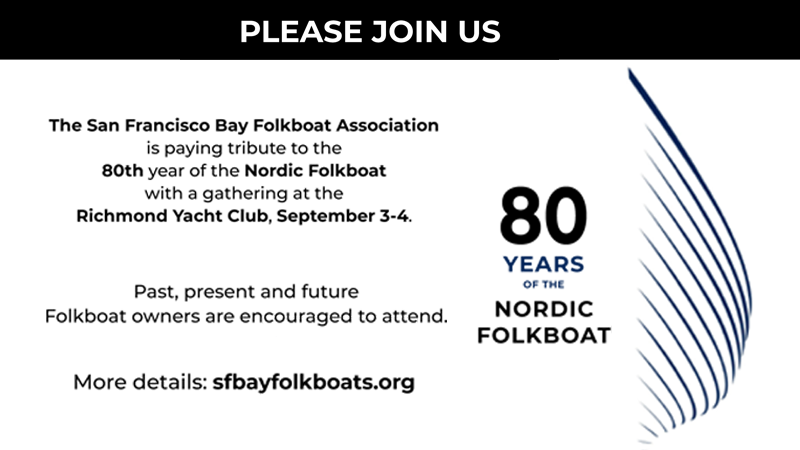
50th Shaw Island Classic Race
Blue skies, sunshine and predictions of uniform, northerly winds blowing 8-10 knots in San Juan Channel had racers smiling in anticipation of a perfect day for the long-awaited 50th annual Shaw Island Classic yacht race on August 6. Hosted by the San Juan Island Yacht Club, celebration of the 50th race was delayed two years due to COVID-19. The unofficial 49½ and 49¾ Un-Shaw races in 2020 and 2021 provided an opportunity to escape the craziness, enjoy fresh-air sailing, and keep racing skills sharp.
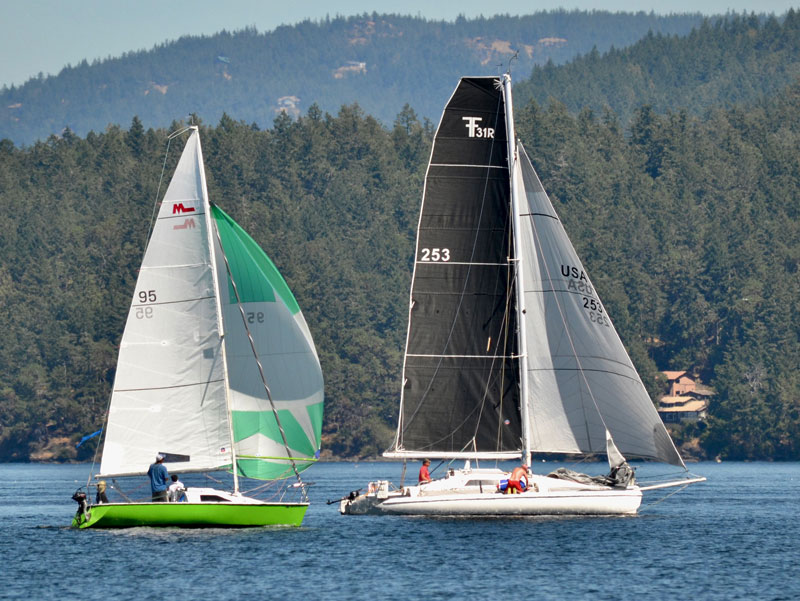
This race is unique in that Shaw Island is the only mark and can be rounded in either direction. It is only a 13-mile course, but shifting winds, variable currents, narrow, rocky channels and ferry traffic often turn it into a nautical chess game.
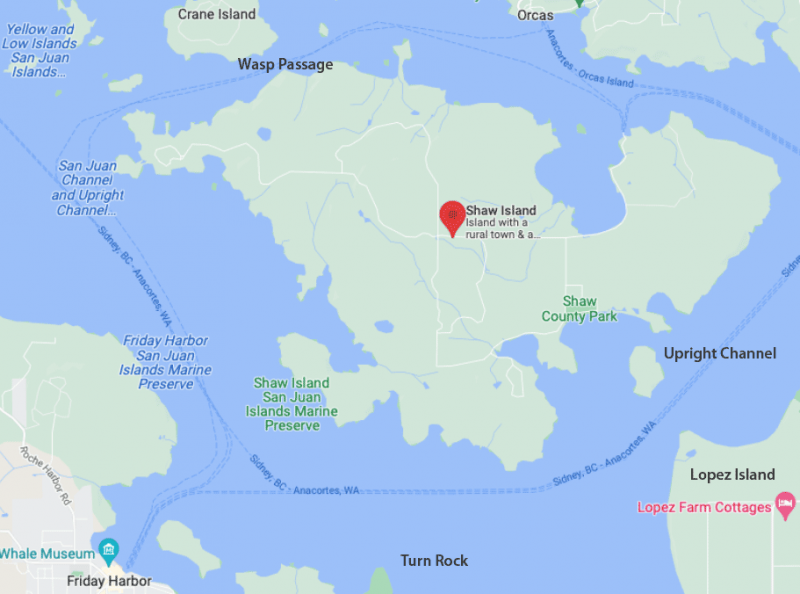
The fleet of 31 boats split on the best way to round Shaw, with 17 heading clockwise up San Juan Channel into the wind on a light flood. The other 14 put up spinnakers or stretched out on a broad reach in hopes of clearing Turn Rock and picking up the flood in Upright Channel.
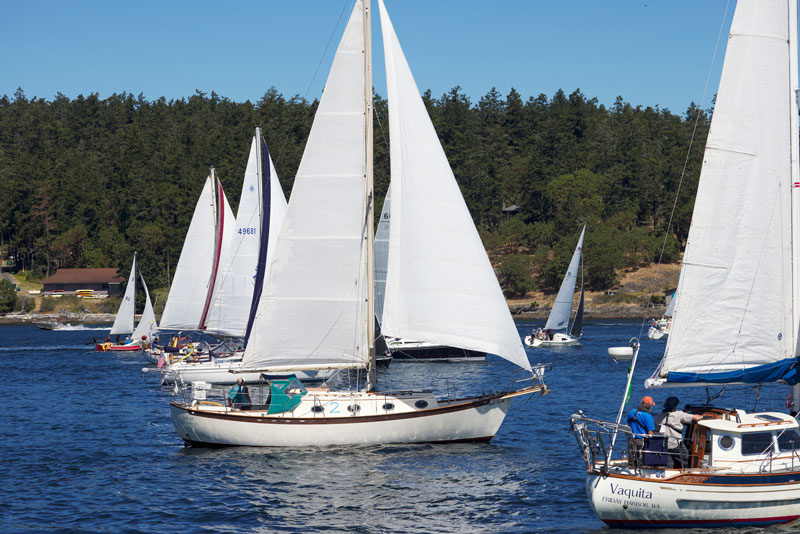
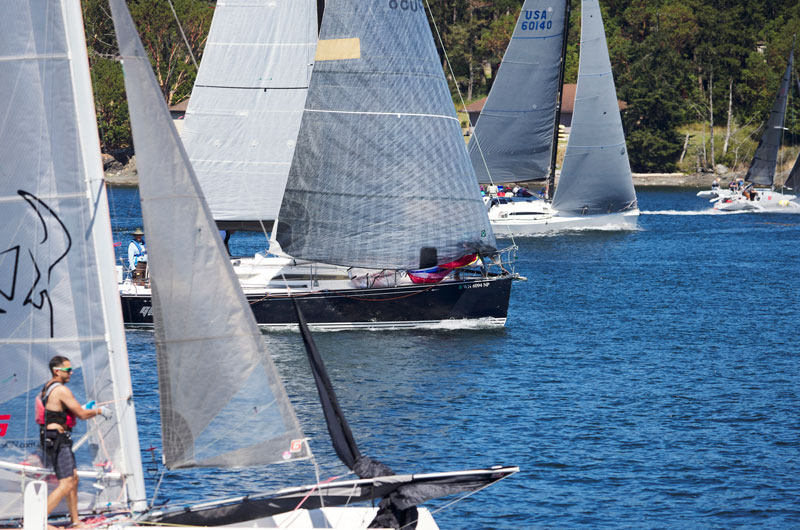
“One of the things that makes this race special is meeting the counter-course fleet halfway,” said Mike Kaminskas, skipper of the Pyramid 660 Homeless Hare, who placed first overall on corrected time and first in the PHRF-B division. “I always love finding out how we are doing. If we are not yet at the halfway point, I say, ‘Here comes the easy part!’ But if we are beyond the halfway point it’s, ‘Here comes the hard part!’”
Nigel Oswald, skipper of the F-25C Makika and first-place finisher in the multihull division, added, “Clockwise was definitely the way to go. I think we may have had one of the most pleasant Wasp Passage passages in memory, just a hole at the entrance and exit but a lovely kite run through!”
The mid-course committee boat reported that all the clockwise boats passed the halfway point before any of the counterclockwise fleet, which stalled in Upright Channel. “The hardest part was Upright Channel,” said Betsy Wareham, skipper of the Martin 242 Purple Martin and first-place finisher in the PHRF-C division. “No wind, puffs from any direction — we just tried to connect the puffs and managed to get through.”
Despite hitting “the hard part” in Upright Channel, the clockwise fleet made it to the finish line. Most of the rest of the fleet languished in Wasp Passage as the clock ran out. Eighteen sailboats finished the race. None of the boats in the Cruising-A (no flying sails) division finished, so mid-course times determined the winners.
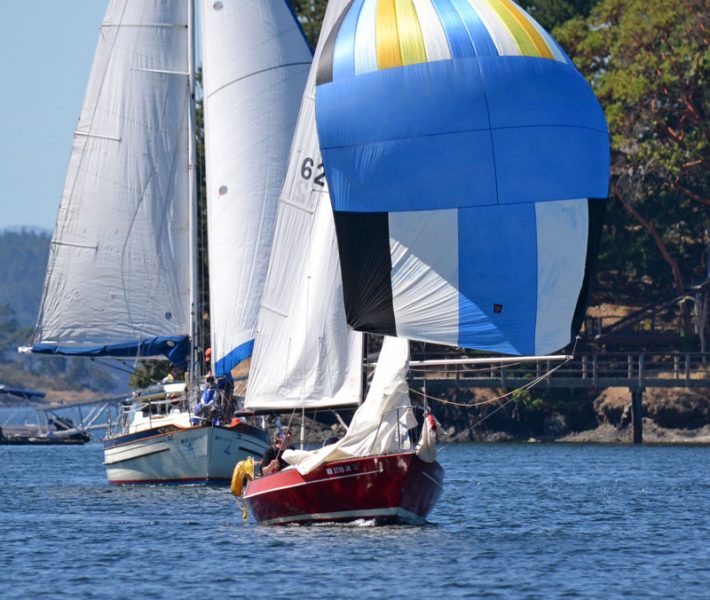
Spirits were high as racers once again gathered at the lovely SJIYC clubhouse overlooking the harbor for post-race banter and a hearty lasagna dinner served by the First Mates. An article about the first Shaw Island Classic race in 1970 with the title “Backward Sailors Finish First” was distributed, showing that the founders set the expectation of fun from the start.
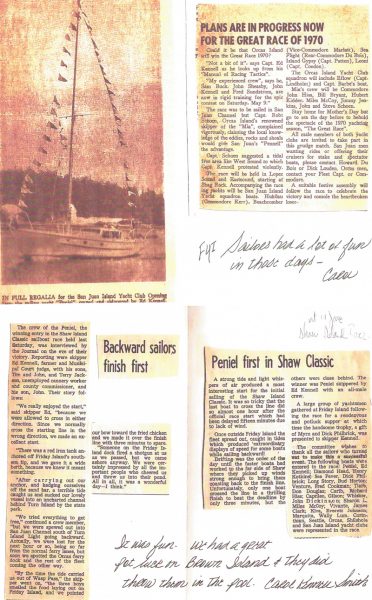
A new award was added in honor of Wally Lum, who skippered Marquita in the first Shaw and has competed in every race since. Donated by Michael and Kat Durland and the crew of the 6-meter Challenge in honor of their longtime skipper and friend, the Perseverance Award goes to the last boat to cross the finish before the deadline. This year’s winner was Treachery, a Martin 242 skippered by Chris White, the only counterclockwise boat to finish the race.
A shout-out goes to the multigenerational team on the King 40 Hydra, skippered by Sam Richardson, for placing first in PHRF-A division and first overall on elapsed time. Complete results and photos are posted at the club’s website at http://sjiyc.com/shaw.
Solo Kayaker More Than Seven Weeks Into Pacific Crossing
On June 21, solo kayaker and adventurer Cyril Derreumaux set off on his second attempt at paddling across the Pacific from California to Hawaii. Derreumaux’s first attempt came to an early end when his kayak sustained significant damage in heavy seas approximately 70 miles west of Santa Cruz. Now, one year on, he has covered more than half the distance needed to reach his end goal. Derreumaux’s on-land support team has released some updates.
“Seasickness for the first few days, lack of sleep, change of rhythm, physical efforts, new diet… Thanks to his previous experience and his patience to pick the optimal weather window the week following his departure, the kayaker has managed with success to take his distances [from] the California coast. Two steps forward while paddling during the day, one step back at night because of the currents, he had to work with great determination to beat the strong currents and dominating winds pushing him toward the American and Mexican coasts.”
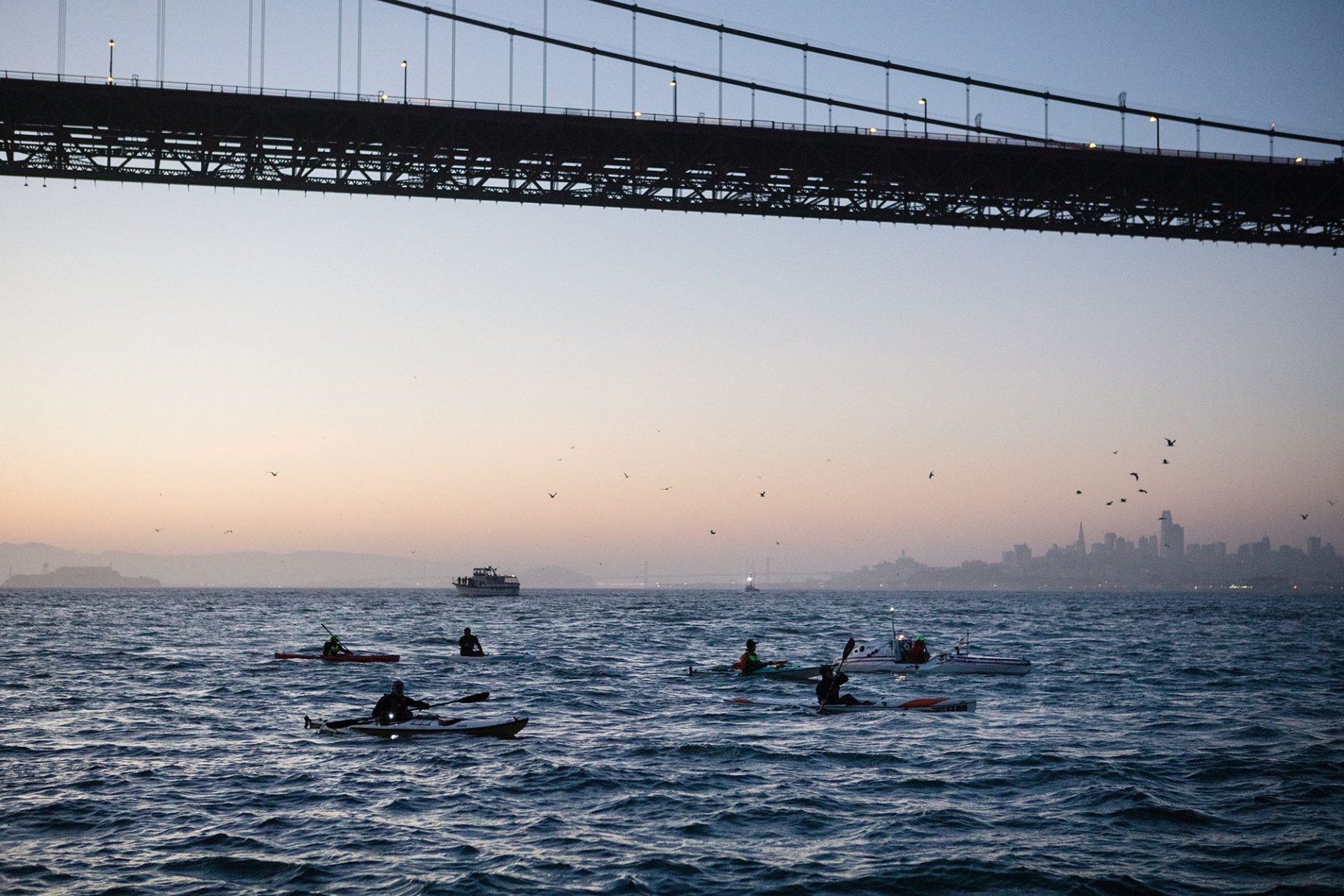
“The coming weeks were as difficult with the installation of great fatigue, several damages that he had to manage: A leak at the back of his boat started to flood a compartment that had to be sealed, cabling issues with his battery that had trouble charging, a close encounter with the tropical storm Estelle, which, thankfully, lost intensity just before crossing paths with the kayak, but still required the navigator to stay sheltered in his cabin for two days while waves were bashing his boat in winds of 25 knots.
“Arriving halfway after 49 days at sea, the kayaker, who is a member of the famous Explorers Club, obviously knows that he still has more than 1,200 miles to complete, and many more weather challenges, as well as technical and health, that he’ll have to manage. He still wants to enjoy fully, the joy from crossing this symbolic halfway point! As he likes to say, ‘There is no adventurer that has crossed halfway and could complete later on!'”
Derreumaux has been calculating what food stores he has left, versus what he needs for the remainder of his journey. Four days ago he wrote: “I had planned for a 70-day crossing and left with 80 days of food. Obviously the past weeks showed that my speed isn’t what I estimated. Several factors like weather, currents and the boat itself are its cause, but let’s not go into this now.”
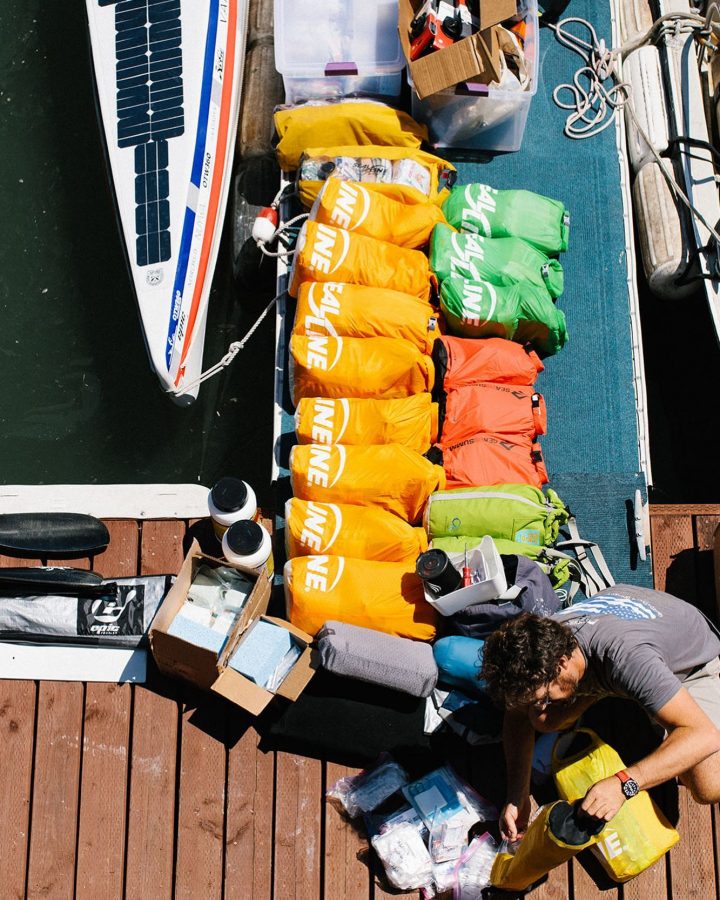
“My average paddling [distance] is 20-25 miles, over eight to 10 hours of active paddling. The drift is usually between five to eight miles. Sometimes favorable, sometimes not. The second half of the journey should be more favorable conditions, both for the active part (wind, swell and current) and the passive (drift). Pessimistic daily estimates would be 25nm a day or a bit less. Optimistic could be 28-30nm or more. It’s reasonable to estimate a 28nm average. 1,200 / 28 = 43 days. Add a couple of bad weather days and that’s 45 more days.
“Since it took me 49 days to reach halfway and I had 80 days total food, I have 30 full days at hand. I need to ration those 30 days so they last me 45.”
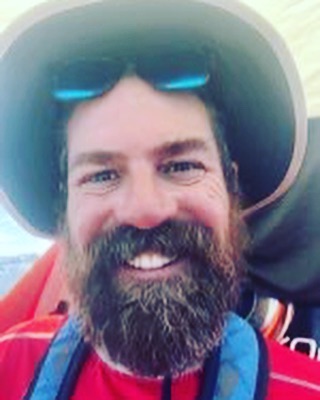
You can learn more about Cyril Derreumaux on his webpage, and keep up with his diary on social media.
A Memoir of Baja and Beyond
A midlife couple abandons careers to sail 20,000 miles in a Baba 35. From San Francisco to Australia to Guam, they master challenges, visit amazing folks, and discover their own hidden humanity. Available at all booksellers. Purchase on Amazon today.
Baja Ha-Ha Search and Rescue Presentation by US Coast Guard
Want to know what to do if you have an emergency at sea, such as a fire, heart attack, or being holed by a whale, and need help? And exactly how does getting help from the Coast Guard work?
The Poobah has announced that the Ha-Ha has arranged for Douglas Samp, USCG Search and Rescue Specialist, to give a presentation at the West Marine Superstore in San Diego late in the afternoon on October 29.
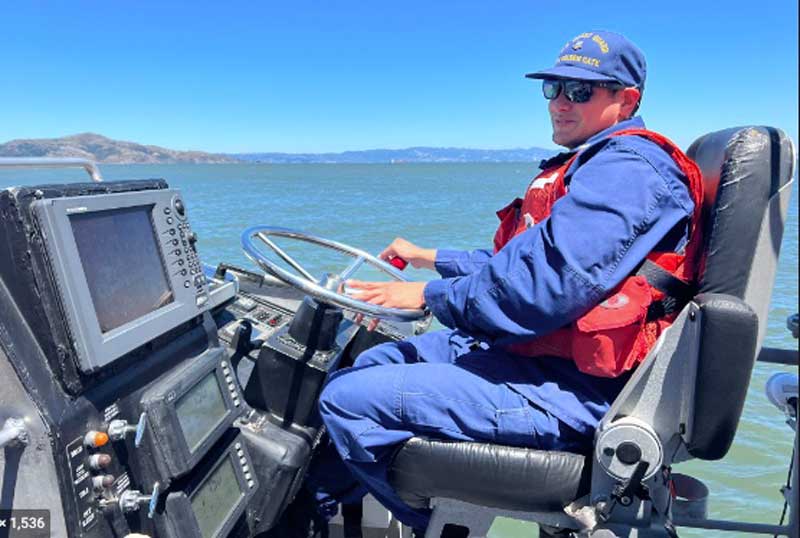
(Samp will also be at the Latitude 38 Crew List Party on September 1 from 6 p.m. to 9 p.m. at Spaulding Marine Center in Sausalito. Tickets are available online, though the event is free for skippers and first mates signed up for this year’s Baja Ha-Ha.)
Here’s a fun fact about Specialist Samp. “I was the Command Duty Officer at RCC in Alameda when a whale struck and sank the J/Boat participant in the Ha-Ha in 2009. I remember that case like it was yesterday.”
As many of you might remember, thanks to the efforts of everyone, from skipper Eugenie Russell and the boat crew, and everyone at the Coast Guard, the result was a “textbook rescue.” This even though the incident happened at the extreme limit of helicopter range.
As Eugenie Russell will again be a skipper in this year’s Ha-Ha, we think there is a good chance she’ll be at the presentation on October 29 to share the experience through her eyes.
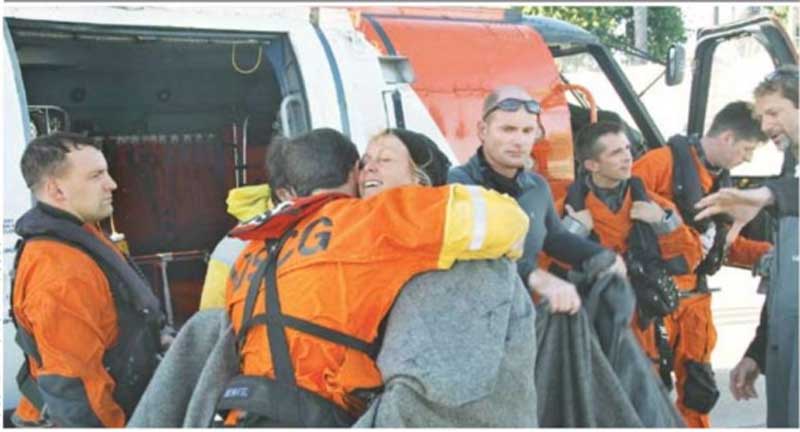
Just how far will the Coast Guard and other services go to rescue mariners in distress? A number of years ago a Ha-Ha boat continued west across the Pacific toward the Marquesas. One of the crew slipped on the companionway ladder and bit his tongue so badly that it became swollen and made it very difficult for him to breathe.
The Coast Guard was contacted; they in turn contacted the Air Force special rescue team. The team boarded a plane in Sacramento, flew halfway across the Pacific, and then — and this is hard to believe — the team jumped out of the plane with an inflatable boat and rescue gear! If memory serves me, it might have even been in the middle of the night, too.
Can we spell cojones?
And they took care of business.
More recently, highly-experienced sailor Andy Schwenk came down with a severe infection during a delivery from Hawaii to California. The Coast Guard employed the services of two Blackhawk helos, two refuelers, and two C-130s — and a ship — to save the day. You can read more about this dramatic rescue in Friday’s ‘Lectronic Latitude.
Given what the Coast Guard is willing to do for you, it makes sense to learn about how to help them do their job in the, thankfully, unlikely event you’ll need them.
We hope to see you at the presentation. It’s free. And the Ha-Ha is inviting everyone, not just members of this year’s Ha-Ha.
Also, for the first time, the Baja Ha-Ha will be offering fleet tracking with Predict Wind. If you’re already signed up for the Baja Ha-Ha or are getting ready, make sure you add the fleet tracking so others can follow your cruise. We hope to see cruisers from the Pacific Northwest enjoying the Delta in the next month or so, and in Sausalito for the Crew List Party.
When the Lights Are On Below, and Above
In December 2017 Marga Pretorius, a shipwright and marine surveyor, sailed out the Gate and headed south, Mexico bound, aboard her Peterson 44 Dogfish. Nearly five years later, what began as a two-year-long sailing adventure has evolved into a cruiser’s life. Recently Marga found herself surrounded by a squall while anchored in Salsipuedes, Mexico. Fortunately, friends were able to help save Dogfish from the nearby rocks.
Marga shared the story on her social media:
“The video of my night of big adventure, made by Michael Gabriel and Katie Gabriel !!
It’s never a good thing when you have all your deck lights on in the middle of the night — means there’s some serious drama going down.
“A pretty epic dinner party / Rummikub slam-down on Dogfish was interrupted around midnight when a big ol’ chubasco came rolling into the super-tight anchorage where I have anchored Dogfish for the last few days.
“Rock to rock, the tiny inlet at Salsipuedes is 120 feet wide. I had 100 feet of scope out on a carefully placed bow anchor, foregoing a stern anchor because being singlehanded, I wanted to be able to pull up and leave in a jiffy if I needed to. When the squall blew through I saw huge gusts from lots of different directions, and in an instant my stern was extremely uncomfortably close to the rocks. Anchor alarms started beeping.
“A lightning strike lit up the dark night and I saw the rocks just 15 feet away from my rudder. F@#$! I fired up the engine and motored ahead.”
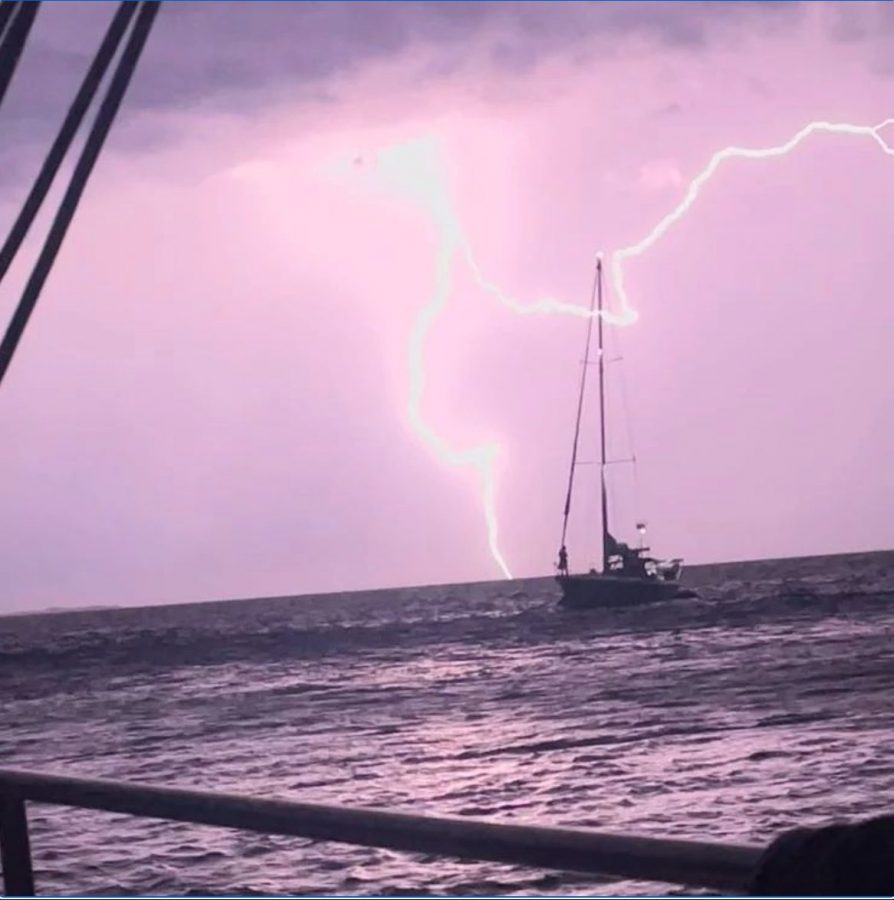
“The best cruising buddies are the ones who show up when you most need them, without having to ask!
“Before I knew it Mike from @sailingalegria was en route to me in his dinghy, life jacket on and portable depthsounder in hand. His help was invaluable! After I shortened scope I backed down on the anchor hard, with Mike at the stern letting me know how many feet I had to the rocky, angry shore.”
View this post on Instagram
“All’s well that ends well! Dogfish lives to fight another day; lightning never got closer than 10 miles to us, and Mike and Katie on @sailingalegria got a pretty epic video of the action!”


